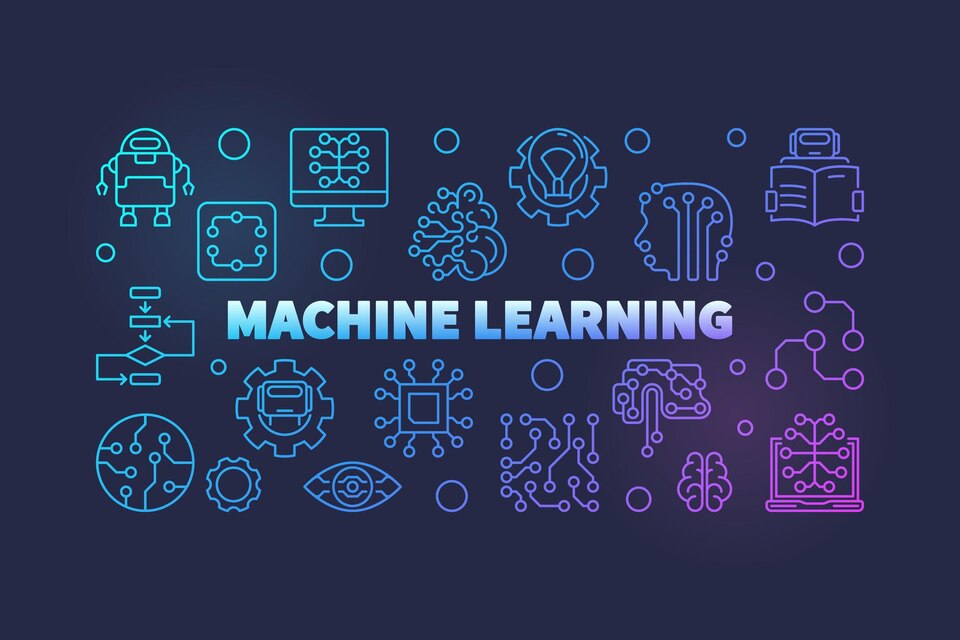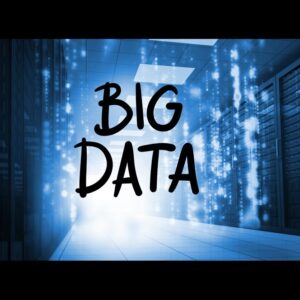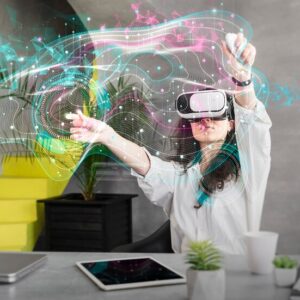In the fast-paced realm of technology, one term that has gained significant prominence is “Machine Learning.” This transformative field, nestled within the broader spectrum of artificial intelligence, has been shaping the way we interact with our digital world.
Let’s embark on a journey to unravel the intricacies and marvels of this cutting-edge technology.

What is Machine Learning?
Machine Learning (ML) is a fascinating field of artificial intelligence (AI) that empowers computers to learn and make decisions without explicit programming. It’s like teaching a machine to improve its performance over time by exposing it to data. In simpler terms, it allows computers to learn from experience.
In today’s tech-driven world, Machine Learning plays a crucial role in various aspects of our lives. From personalized recommendations on streaming platforms to efficient fraud detection in financial transactions, its applications are diverse and impactful.
Machine Learning Relevance in Today’s World
In our tech-centric era, Machine Learning is omnipresent. From personalized recommendations on streaming platforms to efficient fraud detection in financial transactions, its impact is profound and widespread.
Machine Learning Basics for a Newbie
Supervised Learning
In this approach, machines are trained on labeled datasets, making predictions or decisions based on input data. Think of it as a virtual teacher guiding the algorithm toward the correct answers.
Unsupervised Learning
Contrary to supervised learning, this method involves training the model on unlabeled data. The algorithm explores patterns and relationships on its own, a bit like an independent learner navigating through a puzzle.
Reinforcement Learning
Inspired by behavioral psychology, reinforcement learning involves training models to make sequences of decisions. It’s akin to teaching a computer to play a game by rewarding desired moves.
Applications of Machine Learning
Let’s explore the real-world applications of Machine Learning without delving into complex technicalities.
Healthcare Revolution
Machine Learning is a game-changer in healthcare. It assists in diagnosing diseases more accurately, predicting patient outcomes, and tailoring personalized treatment plans. It’s like having a smart assistant for doctors, enhancing medical decision-making.
Financial Wizardry
In the financial sector, Machine Learning algorithms work behind the scenes to detect fraudulent activities swiftly, assess credit risks, and optimize investment portfolios. It’s like having a vigilant guardian, ensuring the security of financial transactions.
Marketing Precision
Marketers leverage Machine Learning for targeted advertising, customer segmentation, and predicting consumer behavior. It’s akin to having a marketing strategist that understands individual preferences and tailors promotions accordingly.
Time-Saving Chatbots
Have you ever engaged with a chatbot on a website? Many of these are powered by Machine Learning, providing instant responses and solving queries.
Enhanced User Experience
Machine Learning is the magic behind recommendation systems on platforms like Netflix and Amazon. It analyzes your preferences and suggests content or products tailored just for you. It’s like having a personal concierge for your entertainment and shopping needs.
Smarter Virtual Assistants
Virtual assistants like Siri and Alexa are made possible by Machine Learning. They understand and respond to natural language, making them more intuitive and user-friendly.
Predictive Maintenance in Manufacturing
In industries, Machine Learning is used for predictive maintenance. It anticipates when machinery might fail, allowing for proactive repairs. It’s like having a mechanic predicting your car’s maintenance needs before a breakdown occurs.
Agricultural Optimization
Machine Learning aids farmers in optimizing crop yields by analyzing data on weather patterns, soil conditions, and crop health. It’s like having a high-tech farming advisor for precision agriculture.
These applications showcase how Machine Learning isn’t just a buzzword; it’s a transformative force improving efficiency, accuracy, and decision-making across diverse industries. It’s about making our technologies more intuitive, efficient, and tailored to our needs.
Algorithms of Machine Learning
Some key Machine Learning algorithms in a way that’s approachable and easy to understand.
Linear Regression – The Straightforward Predictor
Imagine fitting a line through scattered data points. That’s linear regression. It predicts numeric values based on the relationship between variables, like predicting the price of a house based on its size.
Decision Trees – Your Algorithmic Flowchart
Decision trees are like flowcharts helping machines make decisions. It’s a series of questions leading to a conclusion. For instance, deciding whether to go for a run might involve considerations like weather, time, and personal preference.
Neural Networks – Inspired by the Brain’s Wiring
Think of neural networks as a digital brain with interconnected nodes. They excel at complex pattern recognition tasks, like identifying objects in images or understanding speech. It’s like training a computer to think and learn like we do.
Support Vector Machines – The Data Separator
Support Vector Machines are adept at classifying data into different categories. Picture drawing a boundary between two groups, like separating spam emails from legitimate ones. It’s like a virtual bouncer for your data.
Random Forest – Nature-Inspired Diversity
Random forests are like a collection of decision trees, each providing its perspective. This diversity makes them robust and accurate, especially in scenarios like predicting weather conditions.
K-Nearest Neighbors – The Social Predictor
In K-Nearest Neighbors, data is classified based on the majority vote of its neighbors. It’s akin to deciding your favorite food by asking your nearby friends. The more votes, the better the prediction.
Clustering with K-Means – Grouping Similar Things
K-Means clustering groups similar data points together. Imagine organizing a closet by grouping similar clothes. It’s a way for machines to identify patterns and similarities in data.
Naive Bayes – Probability Simplified
Naive Bayes is all about probabilities. It assumes features are independent, simplifying calculations. It’s like predicting if it’s going to rain tomorrow based on the probability of rain on similar days in the past.
Understanding these algorithms gives a peek into the diverse toolkit that Machine Learning employs. Each algorithm has its strengths and applications, contributing to the versatility of this transformative field in technology.
Impact of Machine Learning in Daily Life
Let’s explore how Machine Learning has seamlessly woven into our daily lives, enhancing various aspects with its technological magic.
Virtual Assistants – Your Digital Sidekick
Think about Siri, Alexa, or Google Assistant. These virtual assistants leverage Machine Learning to understand and respond to your voice commands, making daily tasks hands-free and efficient. It’s like having a tech-savvy friend at your beck and call.
Personalized Recommendations – Tailoring Your Experience
Whether it’s Netflix suggesting your next binge-watch or Amazon recommending products, Machine Learning analyzes your preferences to provide personalized recommendations. It’s like having a digital curator that understands your tastes and preferences.
Fraud Detection in Finance – Securing Your Transactions
Financial institutions use Machine Learning to swiftly detect unusual patterns and identify potential fraud in transactions. It’s like having a vigilant guardian protecting your financial well-being in the digital realm.
Healthcare Diagnostics – Precision in Treatment
In healthcare, Machine Learning aids in diagnosing diseases more accurately, predicting patient outcomes, and personalizing treatment plans. It’s like having a digital medical advisor ensuring tailored care.
Social Media Algorithms – Tailoring Your Feed
Social media platforms use Machine Learning to curate your feed based on your interactions, ensuring you see content that aligns with your interests. It’s like having a personalized newspaper that evolves with your preferences.
Predictive Text and Autocorrect – Smoothing Your Communication
When your phone suggests the next word as you type or corrects your spelling, that’s Machine Learning in action. It’s like having a digital editor making your communication smoother and more efficient.
Traffic Predictions – Navigating Your Routes
Apps like Google Maps employ Machine Learning to predict traffic conditions, helping you choose the best route. It’s like having a virtual traffic advisor guiding your way through the streets.
Smart Home Devices – Intuitive Living Spaces
From thermostats that learn your temperature preferences to lights that adjust based on your routines, smart home devices utilize Machine Learning to make your living space more intuitive. It’s like having a home that adapts to your lifestyle.
In essence, Machine Learning isn’t confined to laboratories or tech companies; it’s seamlessly integrated into our daily routines, making our lives more convenient, personalized, and secure.
Challenges and Limitations of Machine Learning
The challenges and limitations that accompany the marvels of Machine Learning, shedding light on the less glamorous side of this transformative technology.
Bias in Algorithms – The Unintended Prejudice
Machine Learning models can inherit biases present in training data, leading to unfair or discriminatory outcomes. It’s like trying to teach a machine to be objective when the data it learns from might carry societal biases.
Data Privacy Concerns – Guarding Digital Secrets
Machine Learning thrives on vast datasets, raising concerns about the privacy and security of personal information. It’s akin to trusting a vault to safeguard your secrets, but in this case, it’s digital data.
Interpretability Issues – Decoding the Machine’s Decisions
Some Machine Learning models, especially complex ones like neural networks, can be challenging to interpret. It’s like trying to understand why a friend made a certain decision without knowing their thought process.
Overfitting – Learning Too Well
Sometimes, Machine Learning models learn the training data so well that they struggle with new, unseen data. It’s like a student memorizing answers but not truly understanding the underlying concepts.
Lack of Sufficient Data – Hungry for Information
Machine Learning models hunger for data, and if there’s not enough or if it’s of poor quality, the results can be unreliable. It’s like trying to learn a language with only a few phrases and expecting fluency.
Ethical Dilemmas – The Moral Quandaries
Machine Learning applications, especially in areas like facial recognition or surveillance, raise ethical questions about privacy and individual rights. It’s like navigating the fine line between technological advancement and ethical responsibility.
Resource Intensiveness – Demanding Computing Power
Training complex Machine Learning models requires significant computing power. It’s like trying to fuel a high-performance car; without adequate resources, the journey can be sluggish.
Limited Creativity – Missing the Spark
While excellent at pattern recognition, Machine Learning lacks true creativity and intuition. It’s like having a tool that can replicate existing art but struggles to create something entirely new.
Acknowledging these challenges doesn’t diminish the incredible potential of Machine Learning but invites a thoughtful conversation about its responsible and ethical use.
Future Trends in Machine learning
The future trends of Machine Learning, offering a glimpse into the exciting directions this transformative technology is heading.
Advancements in Deep Learning – Unraveling Complexities
Deep Learning, a subset of Machine Learning, is expected to witness significant advancements. It’s like peeling layers off an intricate puzzle, enabling machines to understand and solve more complex problems.
Integration with Internet of Things (IoT) – Connecting the Dots
The fusion of Machine Learning with Internet of Things (IoT) is on the horizon. It’s like weaving a digital thread through everyday objects, making them smarter and more responsive to user needs.
Edge Computing for Real-Time Processing – Speeding Things Up
Machine Learning models are moving towards processing data closer to the source, known as edge computing. It’s like having a faster, more efficient brain, making real-time decisions without relying on distant servers.
Explainable AI – Bringing Transparency
As Machine Learning becomes more ingrained in decision-making processes, there’s a push for models to be more explainable. It’s like demanding a clear explanation for a friend’s decision, ensuring transparency in AI systems.
Transfer Learning – Leveraging Knowledge
Transfer Learning involves using knowledge gained in one task to improve performance in another. It’s like applying skills learned in one job to excel in a different role, making Machine Learning models more versatile.
Automated Machine Learning (AutoML) – Simplifying the Process
AutoML is streamlining the machine learning process, automating tasks like model selection and hyperparameter tuning. It’s like having a personal assistant that handles the technicalities, making Machine Learning more accessible.
Quantum Machine Learning – A Leap into Quantum Realm
Quantum Machine Learning explores the integration of quantum computing power into ML algorithms. It’s like upgrading from a traditional engine to a quantum-powered one, unlocking unprecedented computational capabilities.
Ethical AI and Responsible AI Practices – Guiding Principles
The future of Machine Learning emphasizes ethical considerations and responsible AI practices. It’s like establishing a code of conduct for the digital world, ensuring the ethical use of this powerful technology.
As we journey into the future of Machine Learning, it’s an exciting landscape filled with possibilities. The trends outlined here represent a continuous evolution toward more powerful, transparent, and responsible applications.
Conclusion
Summary of Key Points
Machine Learning’s journey from conceptualization to widespread application showcases its transformative power in diverse sectors.
Acknowledging Machine Learning’s Evolution
As we navigate the complexities of this technology, acknowledging its evolution and impact allows us to better comprehend its significance in our lives.
Encouraging Further Exploration
The dynamic nature of Machine Learning calls for continuous exploration, both in understanding its capabilities and addressing its challenges. Embracing curiosity and pushing boundaries will pave the way for an even more incredible technological landscape.
Thanks for finding this blog useful for your reading, you can visit TheGreatInfo.com on a regular basis to know more about new technology trends. Have a good day!!





